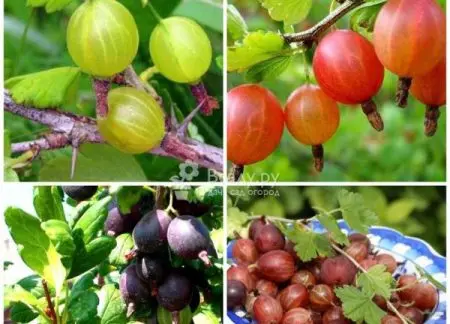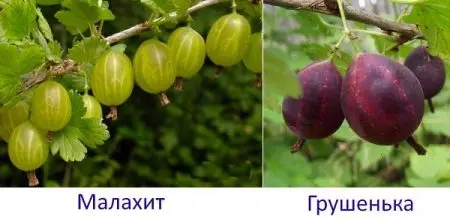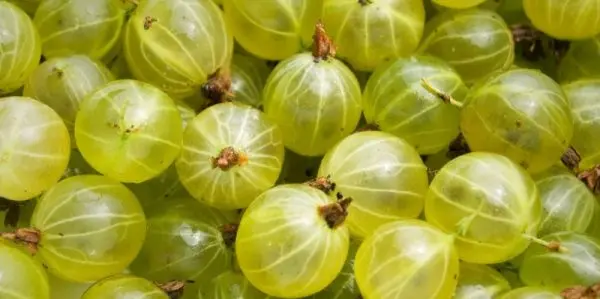Contents
One of the most famous fruit shrubs that we have known since childhood is the gooseberry. Its large sweet berries, ubiquitous thorns and spreading bushes have given many of us unforgettable minutes and hours when picking, eating or trying to care. The best varieties of gooseberries are quite unpretentious, but at the same time productive, their appearance will become an ornament for any garden. Gooseberries belong to the Grossulariaceae (Gooseberry) family, which has more than 160 species that differ in berry diameter, disease resistance, the presence / absence of thorns, and yield. Describing gooseberry varieties will take a long time, so let’s focus on the best varieties for your garden.
How to choose a variety
The gooseberry family is divided into three large groups, depending on the place of origin and general characteristics. European gooseberries – large fruits, rich taste, but at the same time weak resistance to infections and extremely low ability to reproduce. American gooseberry – small fruits, unexpressed taste, but at the same time high resistance to fungal diseases, propagated by cuttings and layering.

Hybrid American-European gooseberry – large-fruited berries with a pronounced taste, moderate disease resistance, high fertility. Gooseberry species suitable for cultivation in Siberia, Ukraine, and the Moscow region also differ among themselves: the size of the berries, the color of the fruits (from green and yellow to red and purple), the presence or absence of thorns, ripening time and yield. The most convenient bushes in the economy are those with straight shoots, which are practically not prone to the formation of a large number of shoots. Such bushes grow rare, which increases the access of sunlight and fresh air – therefore, increases the yield, makes it easier to care for the bushes.
Video “Everything you need to know about gooseberries for every gardener”
Demonstrative video with a lot of useful information about berries.
Varieties without thorns
Of course, the best varieties of gooseberries are without thorns, such varieties make it easier to care for plantings, and the subsequent picking of berries will take place without unnecessary injuries. An indisputable plus of gooseberries without thorns is that the yield remains at a high level.
Eaglet is a black-fruited winter-hardy gooseberry. The approximate yield per bush is almost 7 kg per season. Overripe berries of this species are characterized by a high content of anti-sclerotic compounds, vitamin C, serotonin, folic acid, carotene. Northern Captain – medium ripening, low spreading, the bush gets rid of thorns as it grows, winter-hardy. Berries are medium sized, black. It is extremely resistant to powdery mildew, anthracnose, septoria. Remarkably rooted at any stage of vegetative development.
Delicate – large sweet berries, winter hardiness, resistance to powdery mildew. Bushes are tall, very dense, upright. Productivity – 6 kg of light green berries per season. Serenade is a vigorous, winter-hardy gooseberry, with an average size of dark red fruits. The yield of this variety is average – about 4 kg per bush per season. At the same time, the berries are dense, they are easy to transport without fear of damage to the cargo.

Pax is the hallmark of this variety, large berries of pink or red color. Winter-hardy, resistant to dry conditions and powdery mildew. The increased density of the fruit shell makes it easy to transport them.
Varieties for the Moscow region
Varieties of gooseberries for the Moscow region and Siberia are specially bred taking into account the peculiarities of the climate: long winters and not hot summers. Such a climate requires winter-hardy shrubs that favor strong winds and changeable weather. The above qualities are possessed by hybrid American-European varieties: Kolobok, Malachite, Commander, Rodnik, Yubileiny.
Kolobok – has a high yield (about 12 kg per bush), berries ripen by the end of July. The fruits are oval, dark red, weighing about 5-6 g. It is characterized by low, sprawling bushes with small thorns. yellow is a high-yielding variety with developed immunity to fungal diseases. The fruits are amber-yellow, oval, sweet, weighing about 6-7 g. Small medium spreading bushes, with thorns in the lower part.

Gooseberry Amber is an early ripe variety with large amber-orange berries. Resistant to frost and disease, reaches 1,5 m in height. There are single small spines. is a representative of early ripe gooseberry species.
Spring – ripens by mid-July. The fruits are round, yellow-green in color, weighing about 5-6 g. Bushes are high up to 1,5 m, with straight shoots, few thorns. Anniversary – resistant to temperature extremes, early ripening. The fruits are bright yellow, round, weighing 4-5 g. The bushes of this variety reach 1,5 m in height, grow. It is characterized by increased immunity to powdery mildew and anthracnose.
Senator is a high-yielding variety that is resistant to spring frosts, heat and drought. Absolutely not susceptible to infections. The fruits are dark red, weighing 3-7 g, sweet and sour. The bushes are vigorous, small, with few thorns.

Malachite – mid-season, high-yielding, resistant to powdery mildew. The fruits are large, weighing up to 7 g, green. The bush is practically without thorns, they are located on the shoot singly, medium spreading and vigorous.
Grushenka – early ripe, fruitful, disease resistant. The fruits of Grushenka are medium in size, deep purple in color, sweet and sour. Bushes are compact, with low sprawling, thornless. Gooseberry variety Komandor – mid-season, high-yielding. Like a real commander, he easily resists diseases, he is vigorous. The fruits are deep purple, sweet and sour. The bushes are compact, almost thornless, rarely become slightly spreading.
Top Grades
Sweet and sour-sweet gooseberries look great in jams, pies, fruit salads, yogurts. Having such a shrub on your site is profitable, pleasant, and even useful. When choosing a variety, be guided by the climatic conditions of your region (or immediately take resistant species that grow in Siberia), the taste of gooseberries (some like sourness, while others like sweet berries), in rare cases, the color of the fruit (agree, it’s nice when the colors of all plants are combined). Of course, it is better to give preference to thornless shrubs, since there are fewer difficulties with them. When choosing from a great variety of gooseberries, make sure that the bushes are not prone to excessive shoot formation, otherwise you will have to prune regularly so that the bush does not capture the entire garden.

It is never too late to plant new types of gooseberries to the existing ones. Usually fruit shrubs get along well together, and if you’re lucky, you can get new varieties of berries with an unusual taste and color. The best varieties can be considered: Commander, Grushenka, Malachite, English yellow, yellow, Kolobok, Amber.
Video “Selection of varieties”
Video compilation of different varieties of gooseberries.









